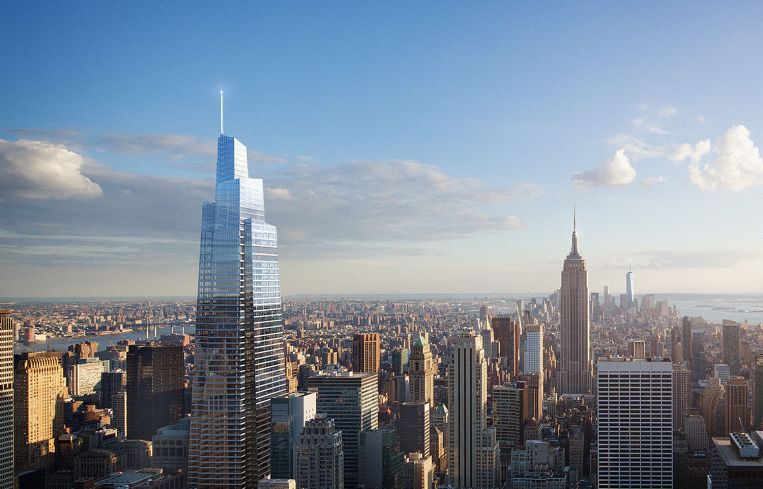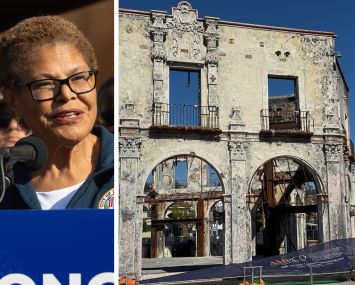After Five Years, Midtown East Rezoning Inches Toward the Finish Line
By Rebecca Baird-Remba March 29, 2017 10:30 am
reprints
After an arduous five years, the Midtown East rezoning is likely to become a reality this summer, paving the way for a forest of new office towers in one of the city’s densest and oldest commercial districts. The proposal has gone from being a hotly contested rezoning under Mayor Michael Bloomberg to a relatively uncontroversial one under Mayor Bill de Blasio.
But should the rezoning pass, developers who need air rights to build will have to foot big bills to pay for projects—a price tag potentially as high as $2 billion.
The rezoning, which is currently making its way through the seven-month-long Uniform Land Use Review Process, would add 6.8 million square feet of office and retail to the existing 70 million square feet of offices in Midtown East. The framework would offer developers the chance to build at least 30 percent larger than the current zoning on 78 blocks around Grand Central Terminal. In return, builders would have to fund public transit or street improvements or pay extra to tap into 3.6 million square feet of unused air rights from landmarked properties in the district.
The special Midtown East district would stretch from East 39th to East 57th Streets and from Fifth Avenue to just east of Third Avenue. The new zoning comes on the heels of City Council approvals for SL Green Realty Corp.’s 58-story office tower at One Vanderbilt Avenue and an upzoning of five blocks of Vanderbilt Avenue from East 42nd to East 47th Streets.
For those who purchase landmark air rights, the current plan calls for developers to pay a minimum of $78.60 a square foot or 20 percent of the sale price, whichever is higher. That amount would go into a public realm improvement fund for street and public plazas. The Real Estate Board of New York and the Archdiocese of New York believe the proposed price floor for air rights would discourage development, because it assumes air rights would sell for at least $393 a square foot.
“The most obvious result of a fixed minimum contribution is that it will further limit resources for landmark upkeep,” Joseph Rosenberg, the executive director at Catholic Community Relations Council, the policy arm of the Archdiocese of New York, testified at a public hearing this month. He called the city’s price for air rights “unrealistic,” remarking, “At this amount, it will clearly stifle the marketplace for development rights, leaving both landmarks and hoped-for public realm improvements underfunded.”
REBNY echoed those sentiments, emphasizing the city-imposed minimum price for air rights would only drive up already-astronomical construction costs in Midtown.
“The floor price established by the city based on the market survey is flawed,” Michael Slattery, a senior vice president at REBNY, testified during a public hearing earlier this month. While the city pegs the value of Midtown air rights at roughly $400 a square foot, REBNY claims that even if the new zoning allowed substantial residential development—which is far more profitable than office space—the air rights would be worth $250 a square foot or less. Under the new special district rules, buildings that benefit from the density bonus can’t devote more than 20 percent of their floor area to apartments.
Slattery told Commercial Observer that the cost of acquiring a site and constructing a new building on Park Avenue, in the most expensive part of the district, would top $2 billion. That estimate includes the cost of acquisition, construction, soft costs, demolition, financing and the loss of revenue during construction. That would work out to roughly $2,340 a square foot, according to REBNY. Landlords would have to charge $204 a square foot for office space to justify the cost, in a neighborhood where the most upscale offices rent for $115 a square foot.
“If the economics don’t make sense, people aren’t going to vacate their buildings, leave their leases and reposition their assets,” said William Rudin, the chief executive officer of Rudin Management, which controls several office buildings in Midtown East. “If people don’t find it economically appealing, landmarks aren’t getting their money, and the city won’t get money to improve transit.”
Landmarks advocates are similarly opposed to the minimum price of air rights for historically protected properties. “We think the floor price for the air rights is already unnecessary and unfair,” said New York Landmarks Conservancy President Peg Breen. She said the price of air rights could go up or down, meaning property owners could get less for their air rights in the future, but the city will always get the same cut of every sale. “A floor price that could conceivably give more to the city than the owner is unnecessary and frankly bad policy. Why should the city get a set guarantee when the owner isn’t going to get that?”
When Commercial Observer asked the Department of City Planning about REBNY’s critique of its data, a spokesman for the agency replied, in an email,“The minimum contribution is based on the transferable development rights (TDR) value of recent office land sales in and around the rezoning boundaries, as evaluated by an independent, third-party market study. We continue to support the minimum contribution as a critical tool that will ensure a public benefit as development occurs and market conditions change.”
Still, the proposal has come a long way since November 2013, when the City Council, led by then-Speaker Christine Quinn, killed an 11th-hour rezoning proposal from the Bloomberg administration (see timeline below). At the time, Quinn and Councilman Dan Garodnick said they didn’t think the plan set an appropriate price for air rights in the district and called the public realm improvement plan “aspirational.” They added, “It is unclear at this point whether some of its most visionary improvements can even be executed.” Challengers of the de Blasio-era rezoning oppose it with some of the same arguments, but local politicians largely approve of it this time around.
After the current plan entered public review in January, a few elected officials voiced their support, including Manhattan Borough President Gale Brewer and Garodnick. The pair headed a steering committee on Midtown East that released a report in November 2015, on which the Department of City Planning drew heavily for the new zoning proposal.
“Our goal in East Midtown is not only to deliver a rejuvenated office district, but also to address mass transit challenges and to promote better open spaces,” Garodnick said in a statement from a spokesman. “We are now deep into the formal process and are working diligently to address outstanding issues.”
The rezoning has sailed relatively smoothly through the lengthy public review process. Next steps include an opinion from Brewer, who is currently considering the proposal, followed by votes from the City Planning Commission and then the City Council.
Updated: This story has been updated with comment from the Department of City Planning. It’s also been updated to clarify the city’s proposed air rights policy for the Midtown East rezoning.


